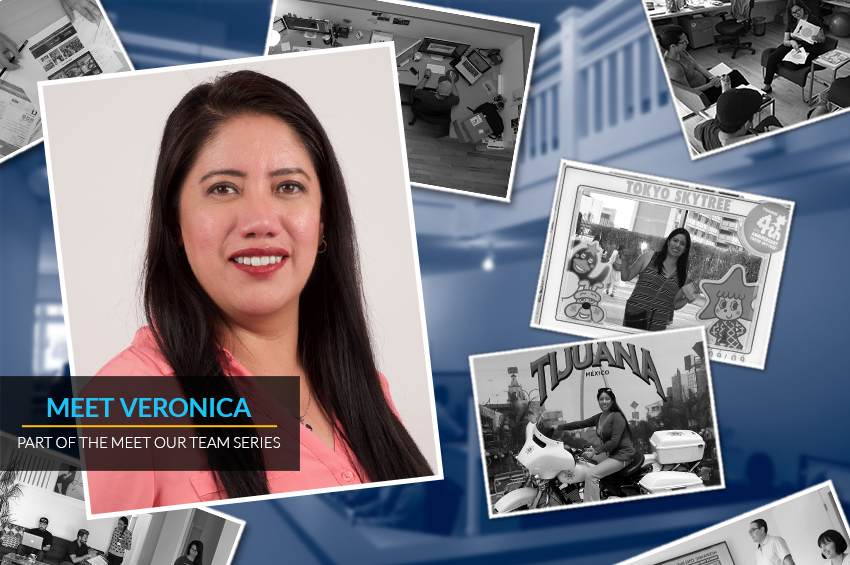Welcome to Captura Group’s “Meet Our Team” series, a chance for us to profile a member of our team and give you a glimpse into the minds and backgrounds of the people that make Captura Group thrive. See our other profiles here.
Producing custom creative and implementing it on ever-evolving platforms not only requires attention to detail and the ability to work quickly, but also a keen interest in the changing digital landscape. The best production technologists are those that seek out the newest and greatest in digital implementation, and channel their excitement into flawless execution for clients.
Enter Veronica Zamora, a puzzle solving, creative technologist, who is well-rounded and values personal and professional growth. Vero, as we call her, streamlines bilingual user experiences for our target audience with backend coding that makes sense to meet our client’s goals. At Captura Group, our team is bilingual and bicultural on both the front lines and behind the scenes!
From the beginning, tell us about your background and upbringing.
I was born in Mexico City where I lived until I was 8 years old when my family moved to Tijuana, Baja California. I had a difficult time adjusting to the regional Spanish as words and slang were different. When I was a little girl I liked cartoons and Japanese anime like Mazinger Z, Sailor Moon and others. Anime lead me to drawing in my spare time. Drawing turned into design, then producing my designs with design software. What started as a hobby using a typewriter and scissors has developed over time and with technology to include the latest software and production tools.
How did your background shape your career direction, if at all?
I studied basic and professional studies in Tijuana where I obtained a bachelor’s degree in Computer Science from the Universidad Autónoma de Baja California. I worked and studied simultaneously in Tijuana and San Diego, as well as in Stockton, CA, which immersed me in English only jobs. Before coming to Captura Group, I worked as a self-taught graphic designer for almost ten years. Off the clock I enjoy taking classes in different disciplines for personal growth. To date I have acquired skills in photography, confectionery, carpentry, artisan crafts, and baking (Editor’s note: Vero makes the best choco-flan). I spend my free time making miniature craft collectibles. In addition to learning, I swim and salsa dance to stay healthy.
Wow, you sound busy! What role does biculturalism play in your life?
I literally cross the international border everyday. In this region, it is very common to interact daily with both cultures. I feel enriched with a better understanding of both countries’ similarities and differences. I think that Tijuana is more similar to the United States than to Mexico City but is a mixture of both cultures. It’s normal in the border region to use Spanglish; it’s very common to hear people in Tijuana using English words in their conversations.
What interested you about production or design?
Technology has built the world as we know it now. Worldwide communications between people are simpler. I was attracted to technology and programming because it’s ever-changing nature demands that you evolve within the discipline. My newest interest is mobile app development.
Nice. What do you find most rewarding at Captura Group?
Being part of a team that consists of people from different countries and getting along with them has helped me to grow as a person and as a professional. I really enjoy getting to know and work with the different departments at the agency. What I find rewarding is programming websites for a variety of clients. I like QA and finding solutions for bugs common on browsers or mobile versions.
What advice would you give marketers or general market brands looking to reach online U.S. Hispanics?
Get to know the complexities of the Hispanic market. Even if we speak the same language, we are very different by region. The way we speak, the words we use, and even the ways of thinking vary among generations. Understand each country’s culture to really understand how to talk to people from each Latin American region in America because it often varies in visuals, text, and engagement.
